The document discusses algorithms and flowcharts. It defines an algorithm as an ordered sequence of steps to solve a problem and notes they are developed during the problem solving phase of programming. Flowcharts are used to visualize the logic and flow of an algorithm by showing the individual steps and connections. Several examples are provided of writing pseudocode algorithms and drawing corresponding flowcharts to solve problems involving calculations, comparisons, and conditional logic. Decision structures like if-then-else and nested ifs are also explained.
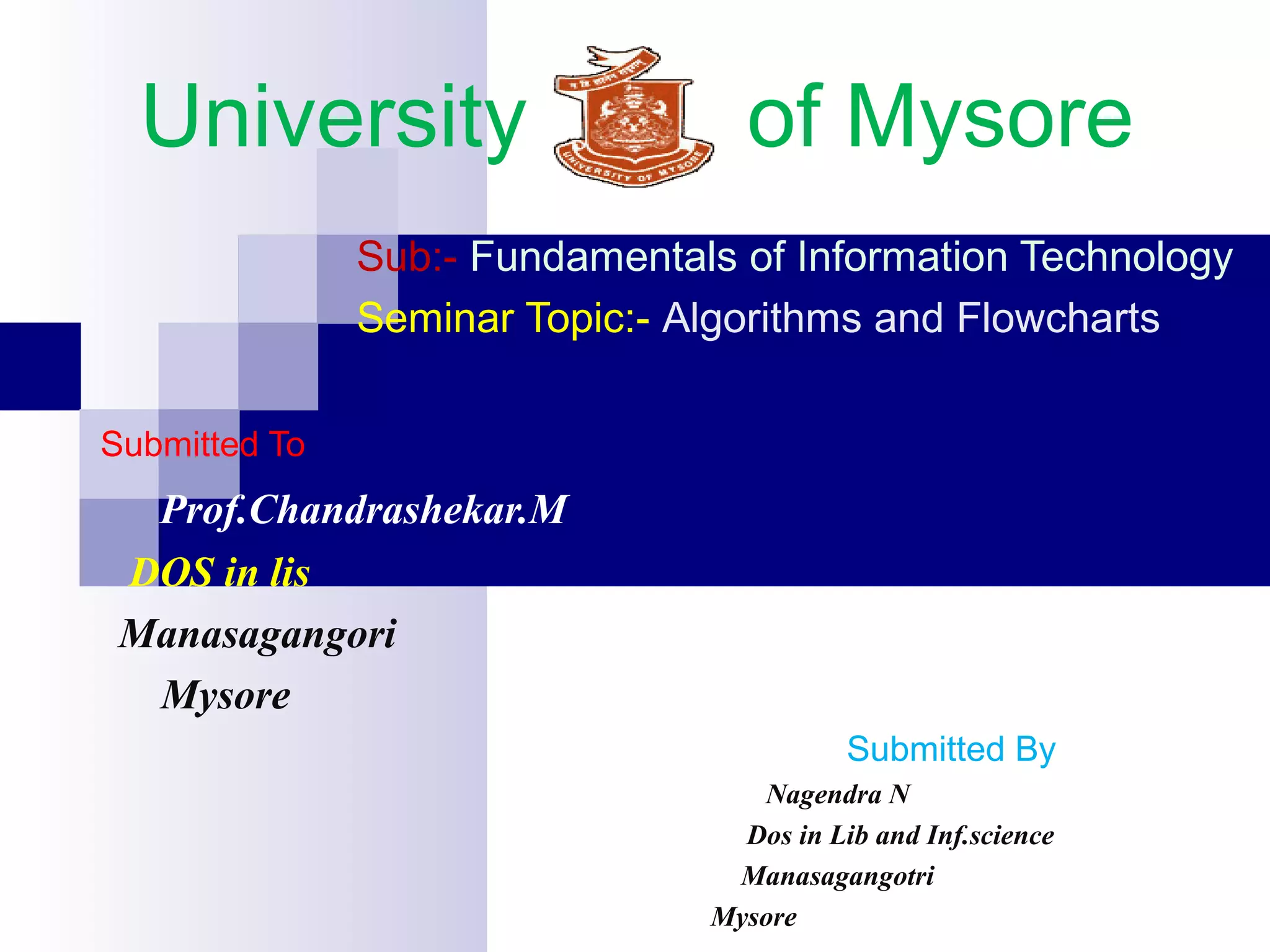

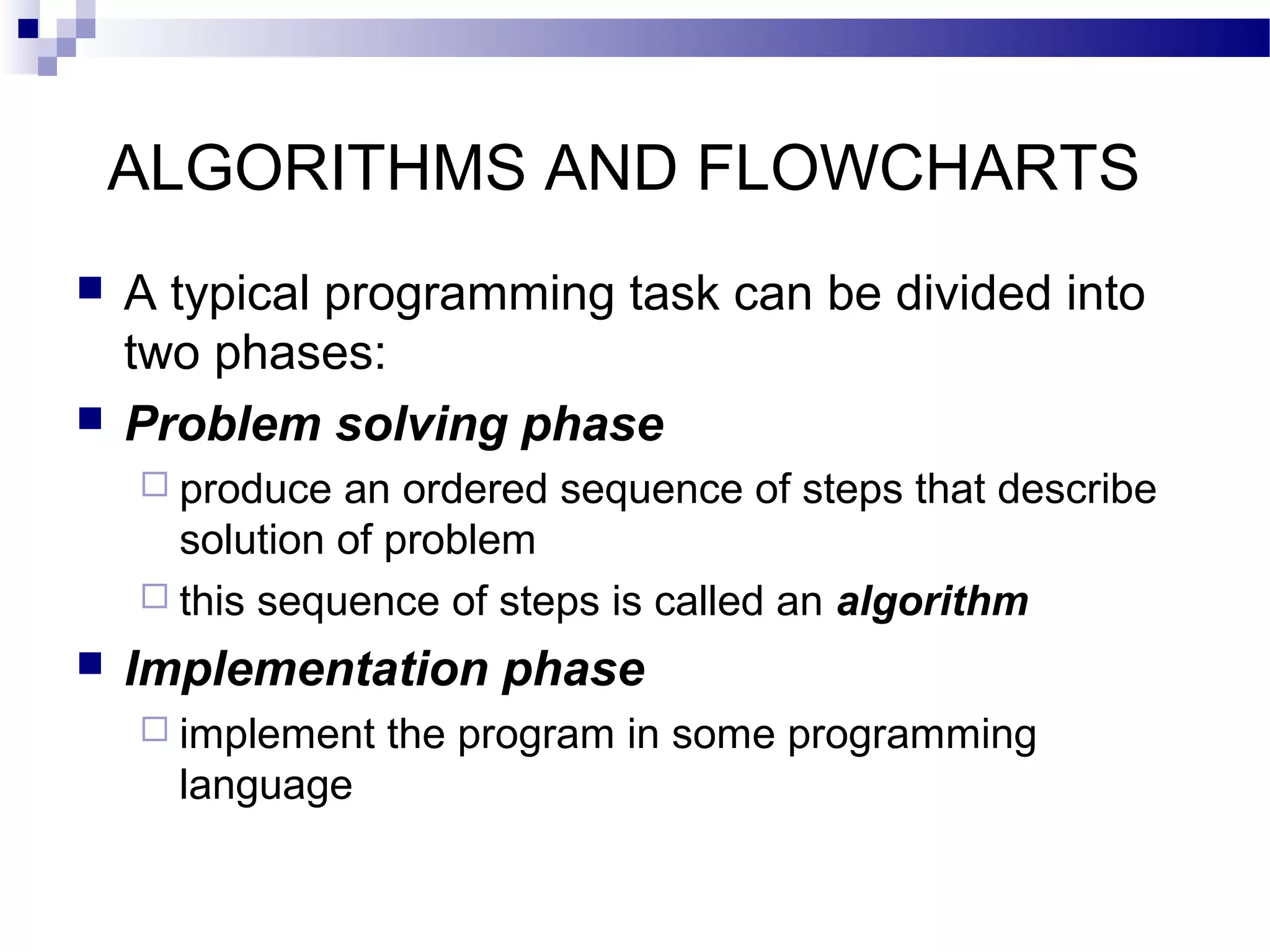
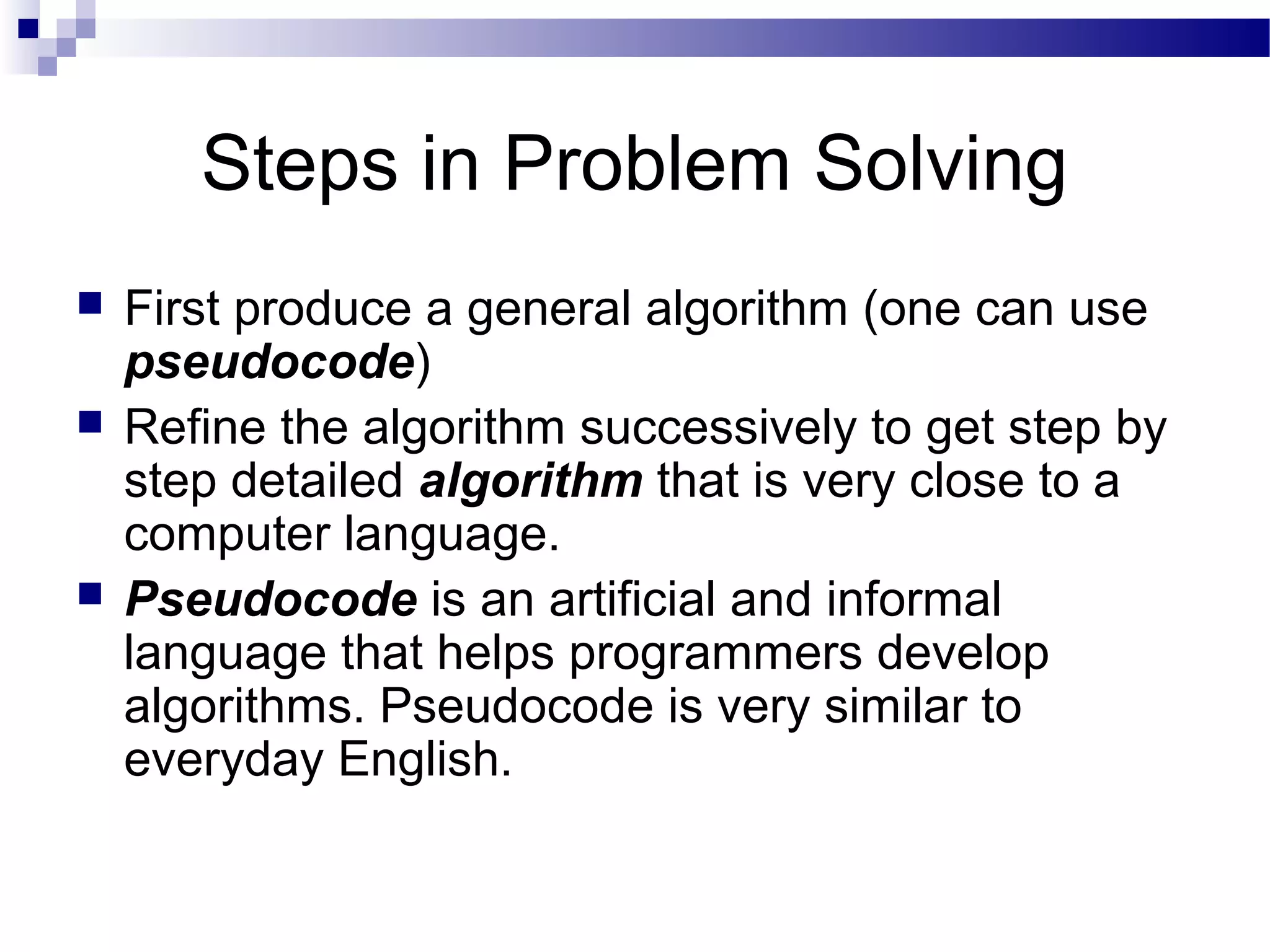




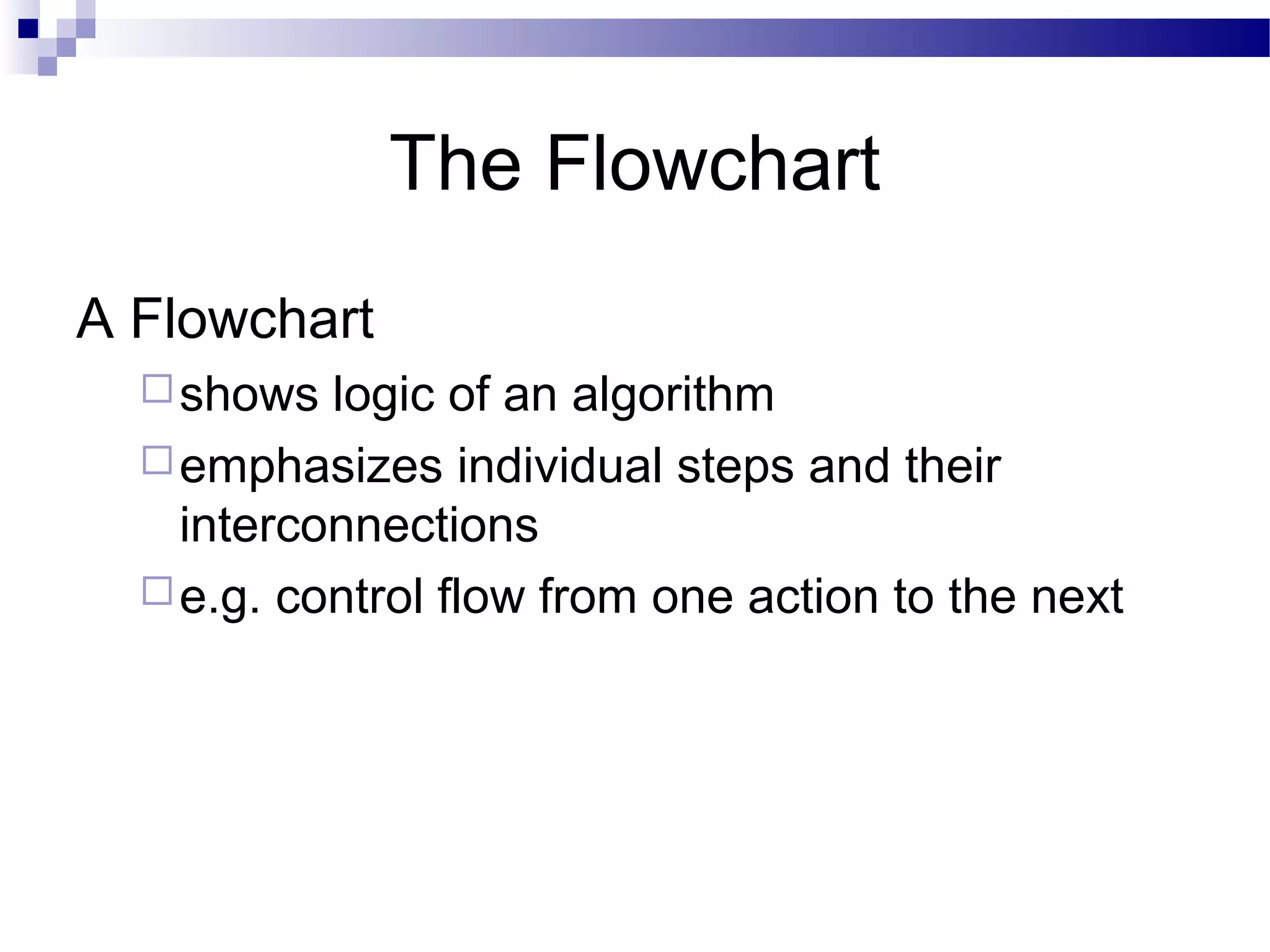
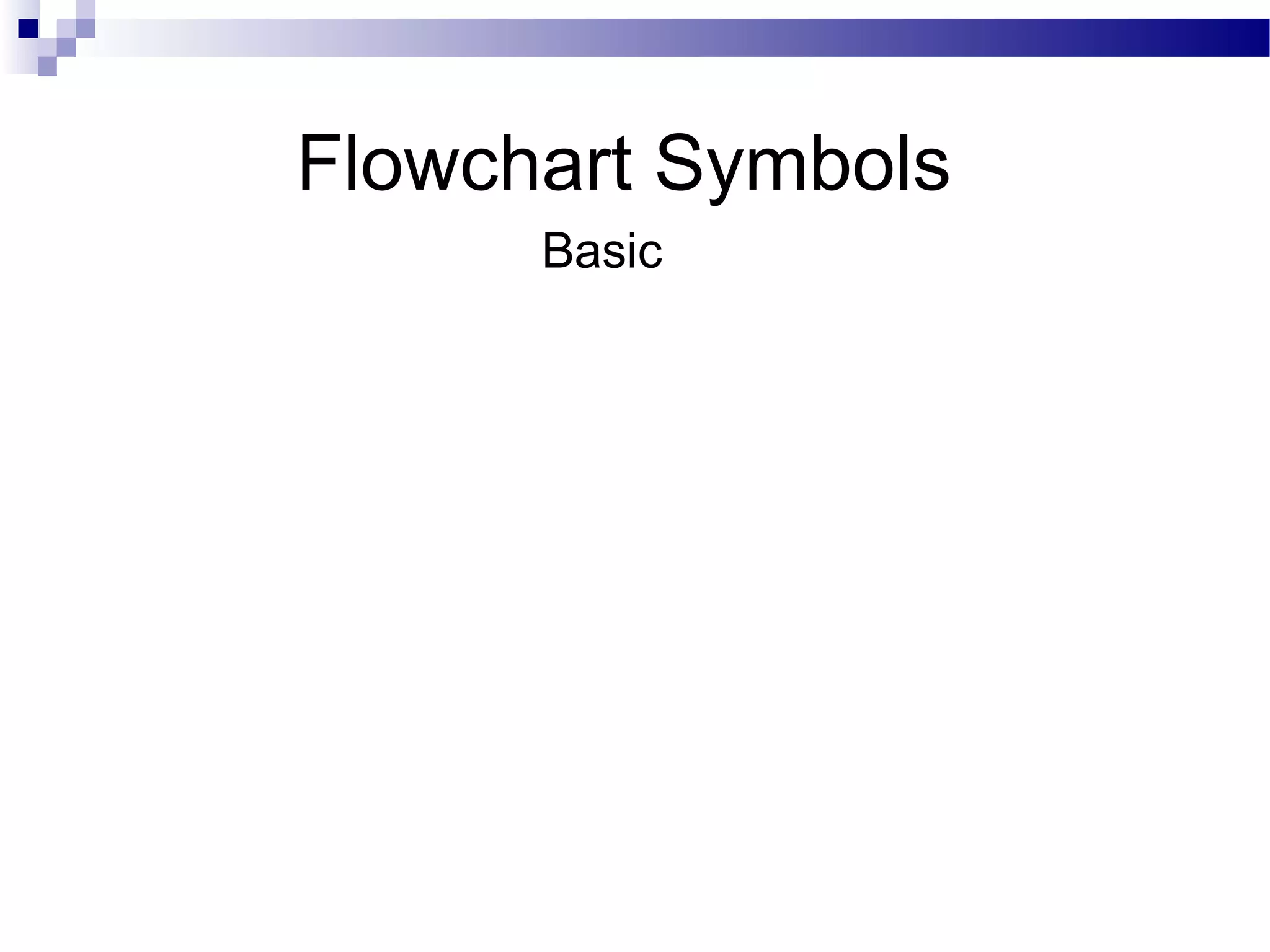



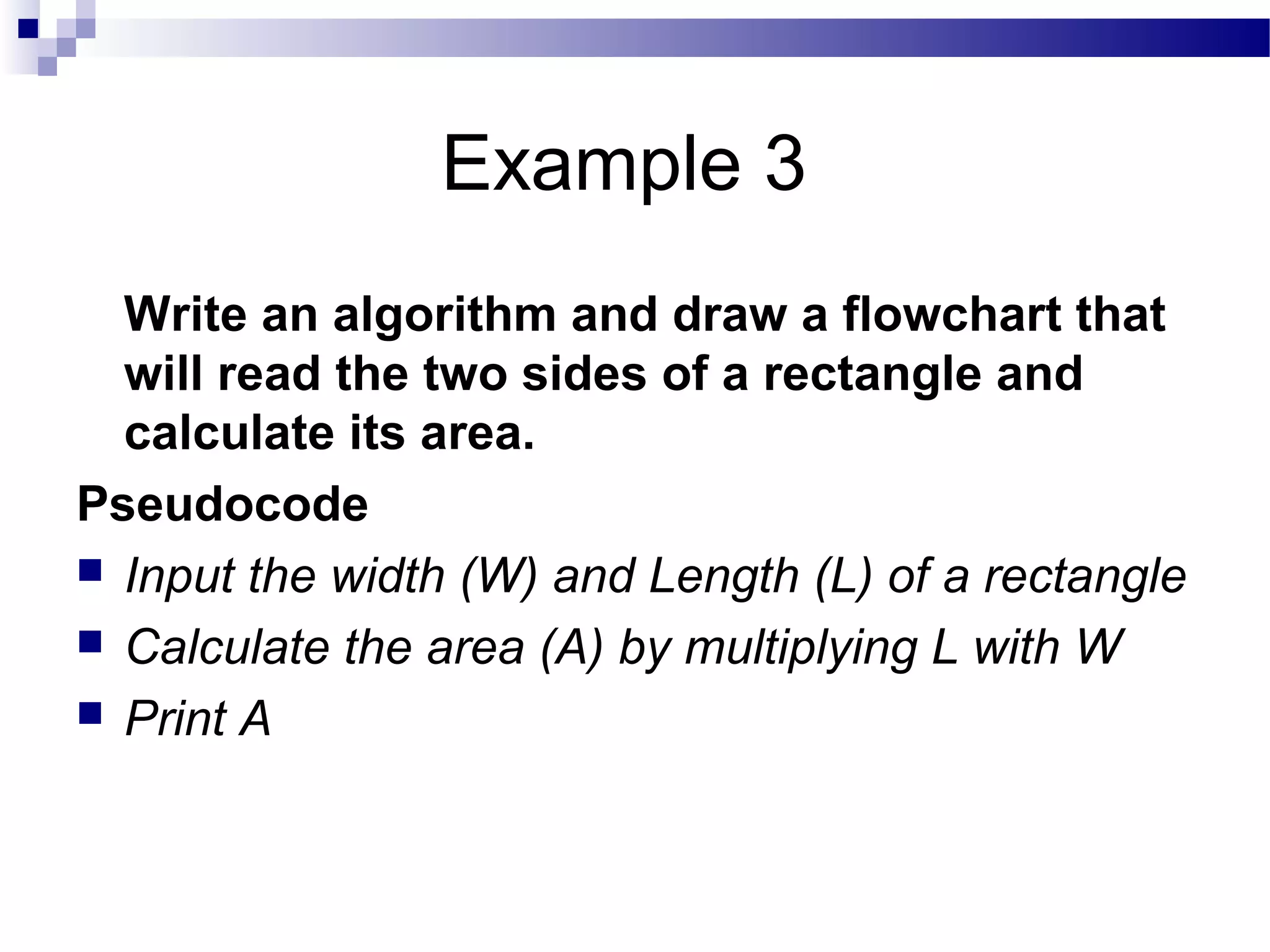





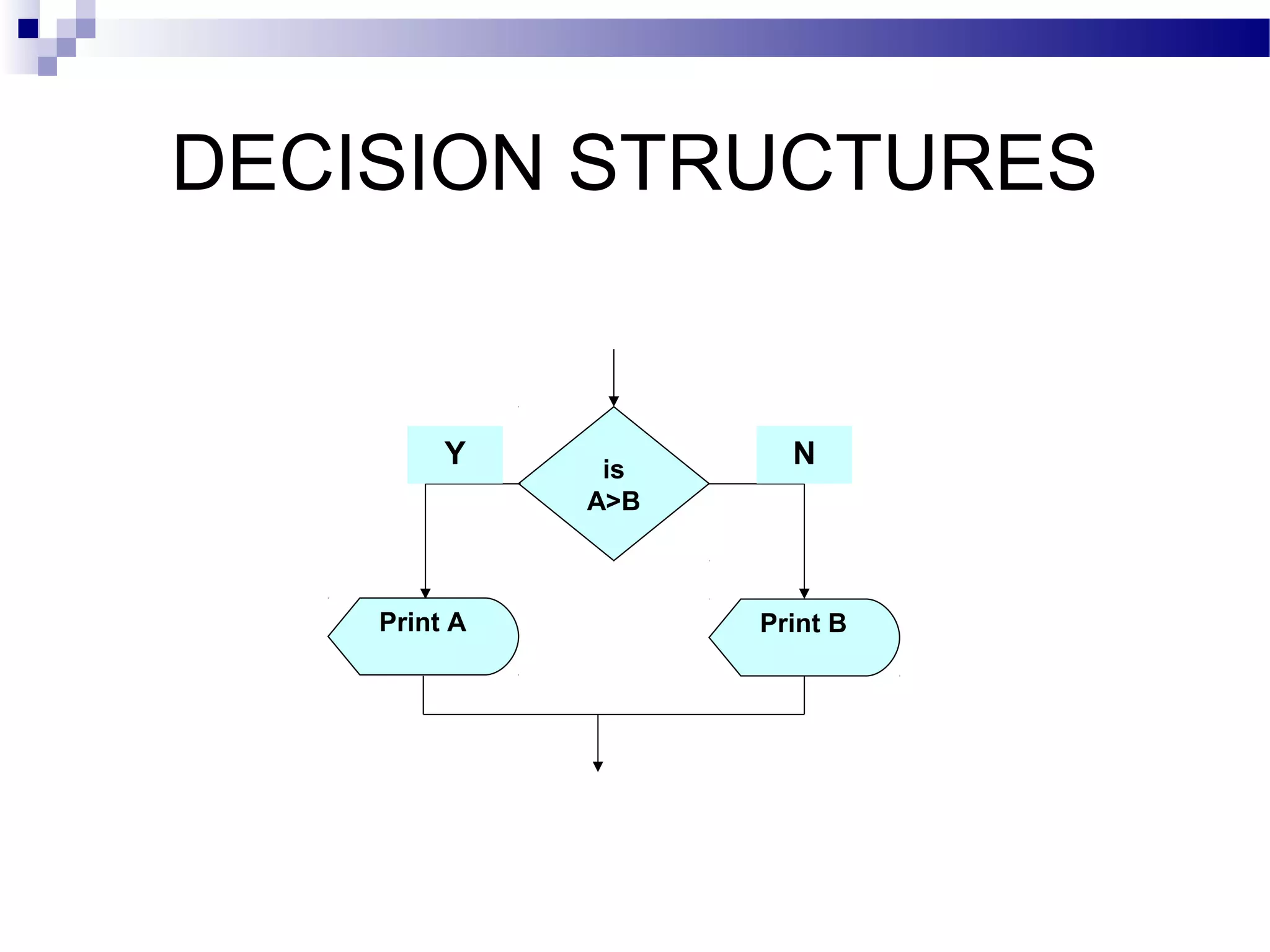
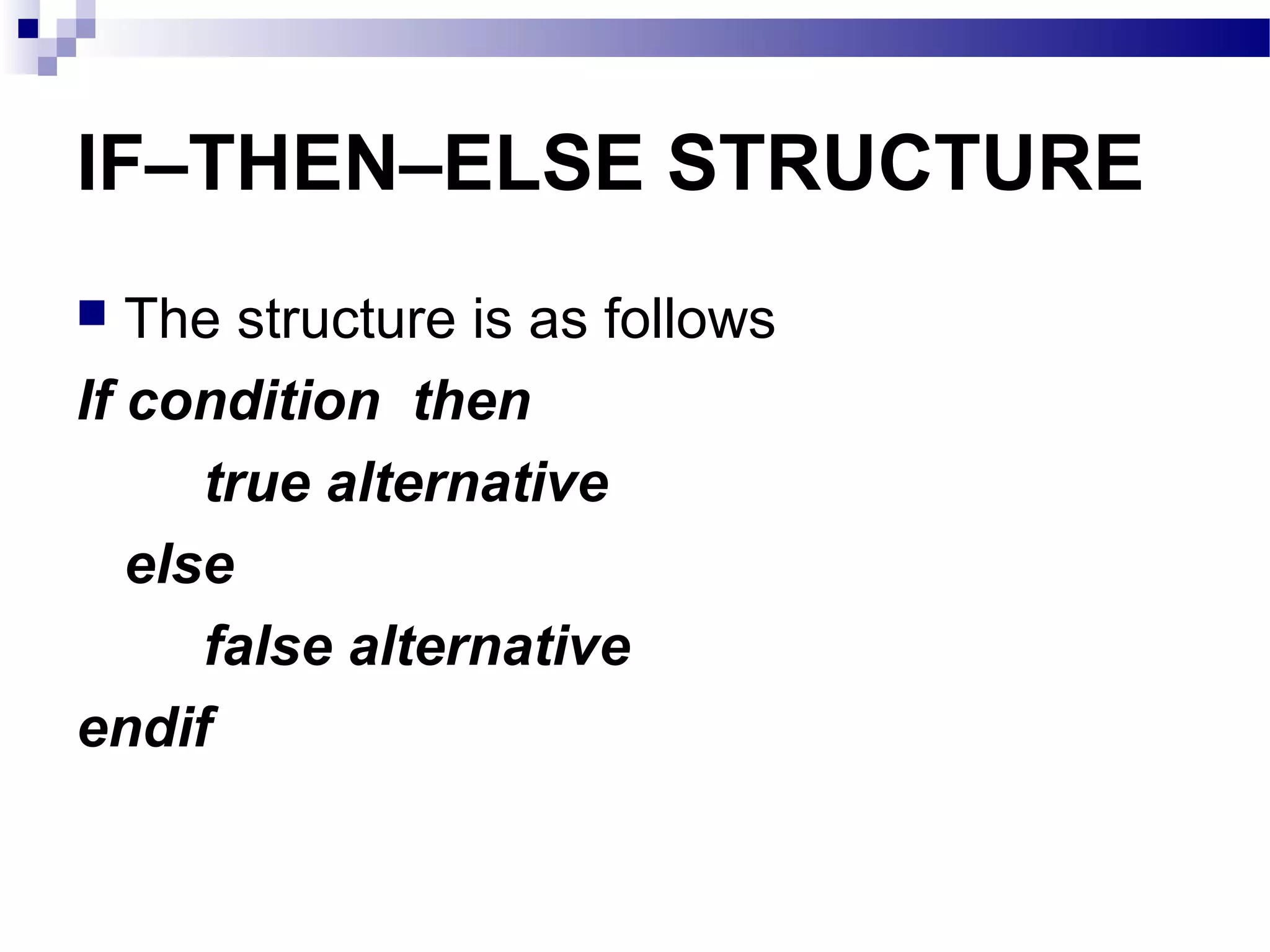






![Example 6
Step 1: Input N1, N2, N3
Step 2: if (N1>N2) then
if (N1>N3) then
MAX ← N1 [N1>N2, N1>N3]
else
MAX ← N3 [N3>N1>N2]
endif
else
if (N2>N3) then
MAX ← N2 [N2>N1, N2>N3]
else
MAX ← N3 [N3>N2>N1]
endif
endif
Step 3: Print “The largest number is”, MAX](https://image.slidesharecdn.com/algorithmsandflowchartspptseminarpresentation-161018142357/75/Algorithms-and-flowcharts-ppt-seminar-presentation-28-2048.jpg)
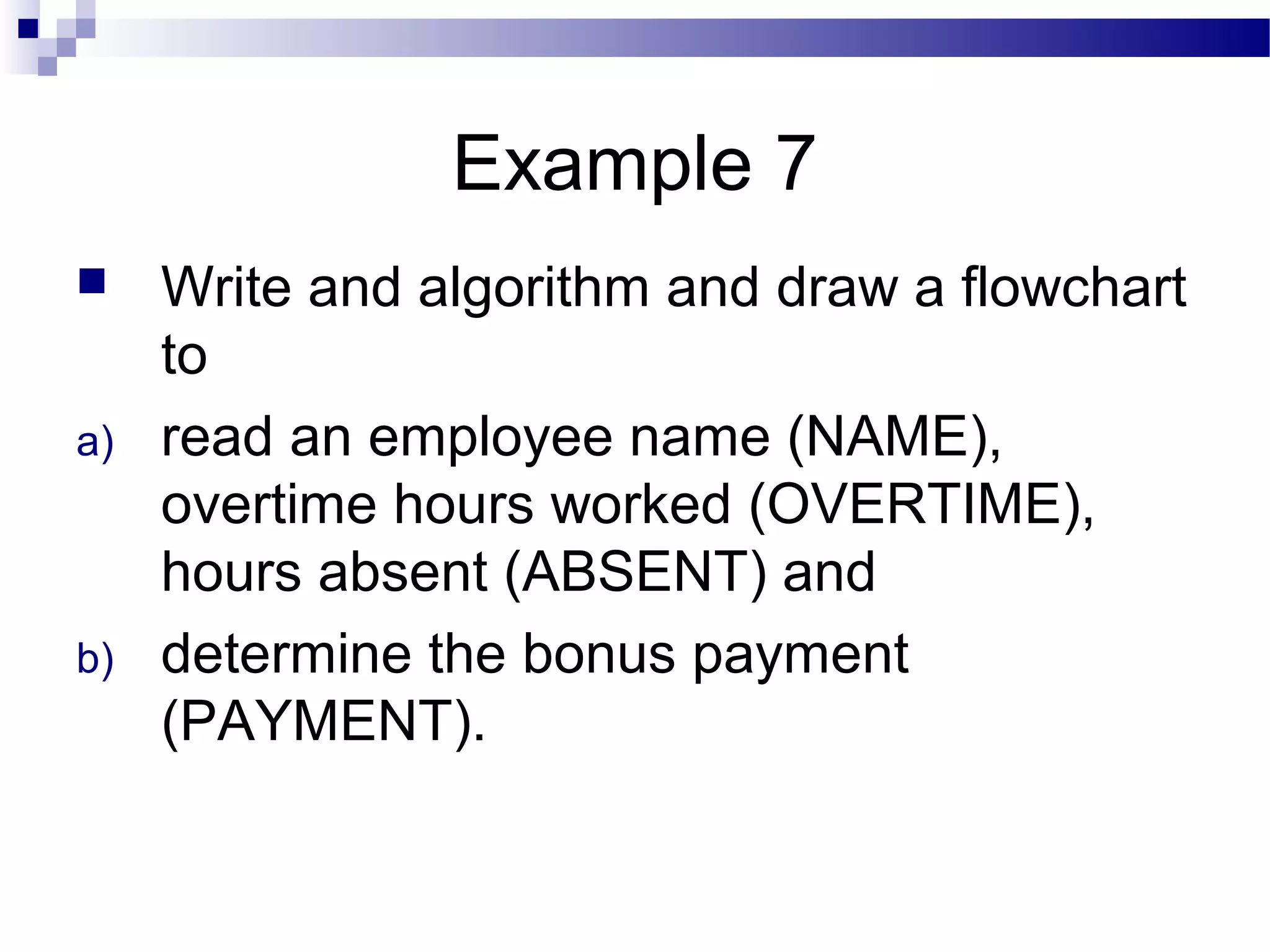
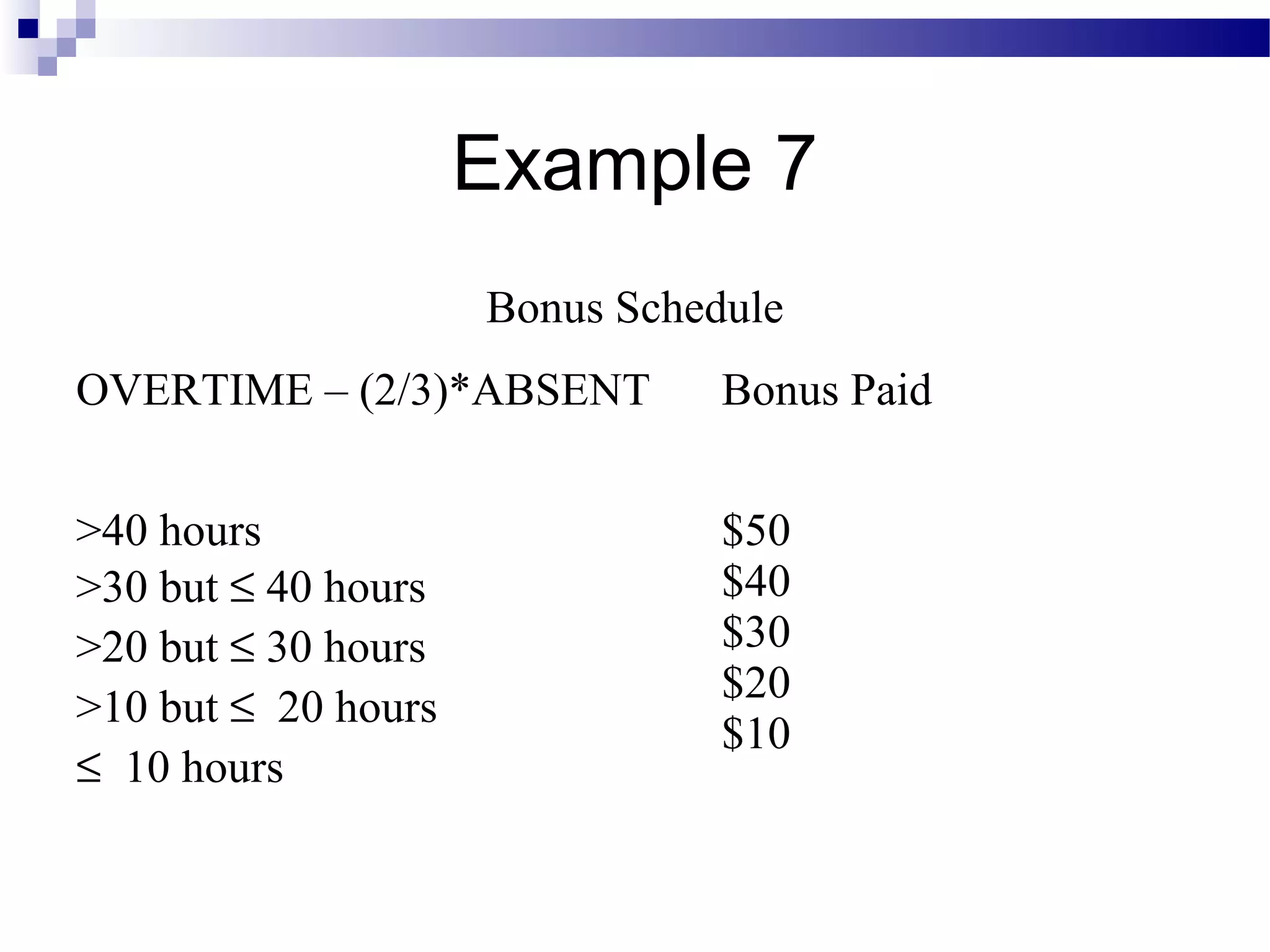

![Conclusion
An algorithm is an effective method that can be expressed within
a finite amount of space and timeand in a well-defined formal
language for calculating a function. Starting from an initial state
and initial input (perhaps empty, the instructions describe a
computation that, when executed, proceeds through a finite
number of well-defined successive states, eventually producing
"output"]
and terminating at a final ending state. The transition
from one state to the next is not necessarily deterministic; some
algorithms, known as randomized algorithms, incorporate
random input.](https://image.slidesharecdn.com/algorithmsandflowchartspptseminarpresentation-161018142357/75/Algorithms-and-flowcharts-ppt-seminar-presentation-32-2048.jpg)

